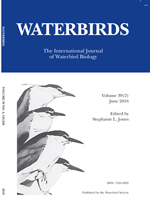Capturing breeding adults of colonially nesting species can entail risks of nest failure and even colony abandonment, especially in species that react strongly to human disturbance. A low-disturbance technique for capturing specific adult Double-crested Cormorants (Phalacrocorax auritus) at a ground-nesting colony was developed to reduce these risks and is described here. Nesting habitat enhancement was used to attract Doublecrested Cormorants to nest adjacent to above-ground tunnels constructed so that researchers could capture birds by hand. Using this technique, Double-crested Cormorants (n = 87) were captured during the incubation and chick-rearing stages of the nesting cycle. Unlike alternative capture techniques, this approach allowed targeting of specific individuals for capture and recapture, minimized local disturbance, and eliminated colony-wide disturbances. The tunnel-based system presented here could be adapted to capture adults or to access the nest contents of other ground-nesting colonial species that are inclined to nest in areas of enhanced nesting habitat and adapt to anthropogenic structures in their nesting area. This system would be particularly beneficial for other wary and easily disturbed species.
How to translate text using browser tools
1 June 2016
A Low-Disturbance Capture Technique for Ground-Nesting Double-Crested Cormorants (Phalacrocorax auritus)
Karen N. Courtot,
Daniel D. Roby,
Lauren H. Kerr,
Donald E. Lyons,
Jessica Y. Adkins
ACCESS THE FULL ARTICLE

Waterbirds
Vol. 39 • No. 2
June 2016
Vol. 39 • No. 2
June 2016
avian capture
capture method
Double-crested Cormorant
Phalacrocorax auritus
social attraction
Suliformes




